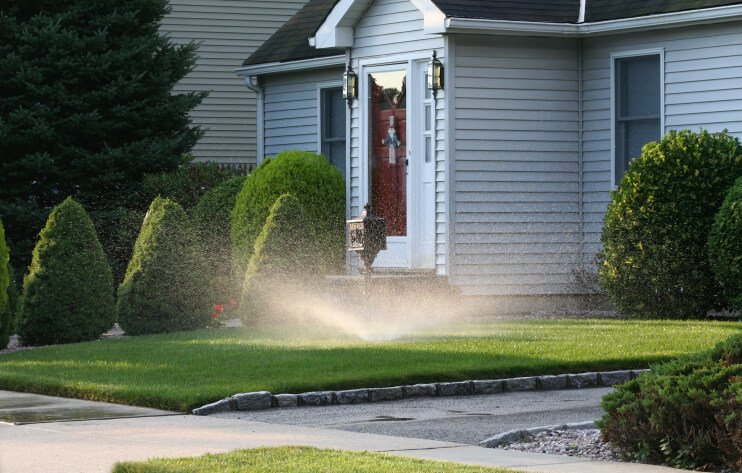
Waterwise Irrigation: Tips for Lowering Your Water Bill
Did you know approximately half the water used in residential settings is used outside, and most of that is used for watering thirsty lawns. Fortunately, there are some simple things you can do to water your yard wisely and thus conserve water. Studies have shown that by incorporating waterwise strategies into your gardening and irrigation planning, you can lower your water bill by as much as 40 to 50 percent. Here are some tips on how you can get started saving water in your lawn and gardening.
- Water early in the morning or late at night, and avoid watering during high winds. It’s best to avoid watering at all when the sun is out, as wind and evaporation are lower during non-daylight times. However, if you have a choice then early watering is the better choice of the two, as damp plants at night have a higher risk of catching diseases. Delay watering during high winds, as these air shifts will distort sprinkler patterns and produce non-uniform irrigation.
- Don’t water when your lawn and landscaping don’t need it. Sometimes this is obvious (such as after a period of heavy rain), whereas other times it can be tricky to tell whether you lawn and garden need watering or not. The simplest test to see if water is needed is to try pushing the six-inch shaft of a screwdriver into the lawn. If it goes in easily then the soil is still moist and so you don’t need to water. It’s generally recommended that you water for longer periods once every two to three days to promote deeper root growth and make your lawn and landscaping more water efficient overall.
- Mulch bare soils spots around trees and plants. Mulching is one of the easiest steps you can take toward water conservation, as it will slow evaporation of moisture (while also discouraging weed growth as well). Simply add two to four inches of organic material like compost or bark, and press it down around the drip line of each plant to form a slight depression that will prevent or minimize water runoff.
- Track down leaks and repair as soon as possible. Not only will a leaking or cracked pipe reduce the effectiveness of your irrigation system, but it will cost you a great deal in terms of your water bill as well. If you notice that your water bill has suddenly increased for no explainable reason, then you may very well have a leak in your irrigation system. Look for soft and very wet spots around your yard and/or water flowing up around sprinklers: both indications of a broken pipe or leak.
Although automatic irrigation systems are as convenient as it gets, it’s important to take the time to observe your system in action at least once per week. Look for issues like overspray on driveways and sidewalks, leaking sprinkler nozzles, and broken or missing sprinkler heads, and fix them as soon as you are able to keep your system as water efficient as possible.